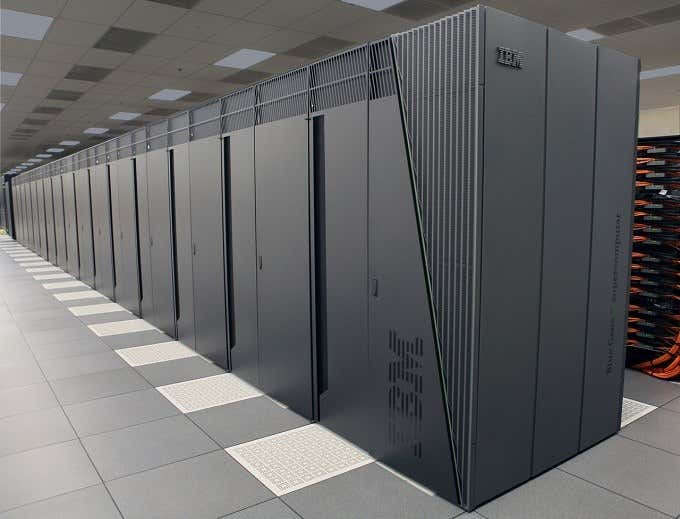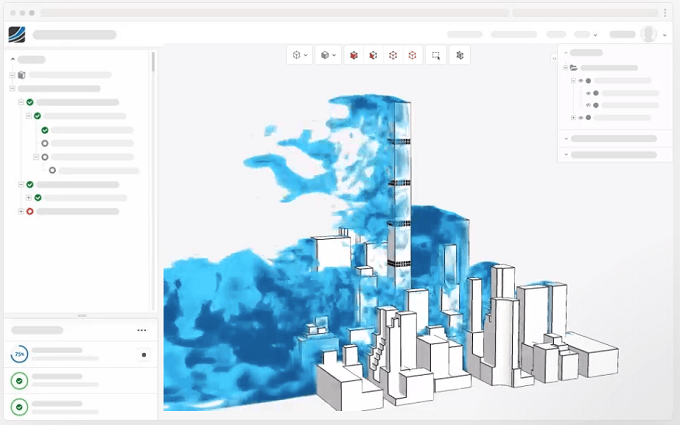People use computers for all sorts of purposes. The computer you have at home can do a variety of things. You can browse the web, play video games and (sadly) get some work done. The sort of work most of us do comes down to typing documents or maybe fiddling with a few Excel spreadsheets. You might even do a little content creation, like video editing.
The average modern home computer can do all of these things to one extent or another. Then there are dedicated workstation computers. Professional-grade devices that are used for anything from professional sound recording, to sophisticated scientific and engineering simulations.

At the high end, these desktop workstations can run into the tens of thousands of dollars. Of course, they eventually pay for themselves through the work that they do, but it can take a while – with a substantial upfront cost.
But there now may be an alternative way to access serious computing power – cloud computing.
What Is Cloud-Based Simulation?

Most of us already use cloud-based computing services on a daily basis. If you use Gmail, DropBox or Office 365, you’re accessing remote computer resources. This form of cloud computing is known as SaaS or Software as a Service.
That’s one way cloud computing is offered. You can also rent time on the vast array of powerful computers that make up the cloud data centers. Then run whatever software you please.
Cloud-based simulations are available as SaaS offerings. Think of these as cloud versions of the software you might have run on a powerful engineering or scientific workstation. You can use a normal computer or mobile device to access the interface of that software.
You program your simulation or upload your data and then hundreds of processors spring into action for a short burst of time to crunch the numbers. Seconds or perhaps minutes later the results of your simulation are available.
Examples Of Cloud-Based Simulations

Cloud-based simulation services are taking off and it seems that every few months we hear of a new service. While which service is potentially right for you is outside the scope of this article, there are a few prime examples that do a good job of showcasing the variety and breadth of this new technology application.
SimScale, pictured above, is used by engineers, scientists and designers. From a virtual wind tunnel to fluid dynamics and mechanical stress tests. You can do it all from a tablet, with their server farms doing all the heavy lifting.
AutoDesk offers cloud-based versions of its industry standard CAD software. CAD workstations are a major category of professional computer, but with a cloud solution you don’t have to worry about, for example, owning an expensive workstation GPU.
Both Ansys and Rescale offer HPC (high-performance computing) services through the cloud. It’s like renting your own supercomputer, just as long as you need it to do a specific job.
This is just the tip of the iceberg of the incredibly computing power that could soon be available to almost anyone.
The Pros Of a Local Workstation
Using a cloud-based simulation solution instead of using your own local professional computer is not yet the best idea for everyone. Indeed, right now it’s actually best for only a few key types of professional user to make the leap to the cloud.
So why would you want to stick to a local workstation? The first important advantage that this approach has is data privacy. If you use any sort of third-party computing facility, your data has gone out of your hands. So if the work is being done on something that’s very sensitive, you’ll have to be 100% sure that the security measures and privacy policy of the service provider is up to snuff.
The other big advantage of the local workstation option is that you can run a vast selection of software on it. Workstations have been the dominant solution for decades. So most of the support is still there. The fact is that your niche professional software package might not yet be on the cloud.
The Pros Of Cloud Simulation
When it comes to going the cloud simulation route, there’s a lot to be said for this novel new method of solving hard problems with hot computer hardware.
For one thing, cloud-based simulation doesn’t have a big upfront cost. You only pay for what you use or a fixed-subscription that includes a certain amount of usage. Either way, costs can be minimized. Think of it like electricity. You flip a switch and are billed for the power that you consume.
When you use local computing power, you have to pay for all the hardware, upkeep and upgrades while not using the machine 100% most of the time and perhaps needing it to provide more than 100% at critical times.
Mobility is another large factor. Virtually any device with an internet connection and modern web browser can make use of a cloud-based service. This means you don’t have to lug a big workstation-class laptop or portable desktop solution around. It’s pretty amazing that an engineer can whip out an iPad on-site and run simulations at will.
The Cloud Is Not For Everyone
There are of course downsides as well. For example, the reliability of the service is completely in the hands of the service provider which makes good service level agreements essential. For individual users, it means that you have to plan for the inevitable outages. Even if a service has 99% uptime, it will go down at some point.
You also need some pretty beefy internet bandwidth to move that data around and trust the company will protect it once in their hands. If these don’t seem like issues to you, then instead of upgrading those workstations, it might be time to sign on the dotted line.